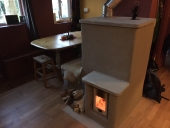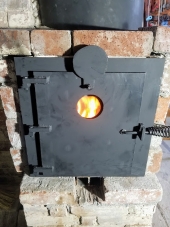
 4
4





 6
6




For all your Montana Masonry Heater parts (also known as) Rocket Mass heater parts.
Visit me at
dragontechrmh.com Once you go brick you will never go back!
 6
6




Silence is Golden
For all your RMH needs:
dragontechrmh.com
 5
5




regards, Peter
 1
1




 4
4




Leslie Walper wrote:When I saw the 3-barrel setup with original paint remaining on the barrels that fire must really cool quite a bit in that larger volume.
Leslie Walper wrote:I watched the Matt Walker video in your link which makes some sense. The chemistry of the post-rocket-burn may be less corrosive in the first place??
regards, Peter
 2
2








Leslie Walper wrote:In your discussion of the P-channel you give dimensions for a 15 cm system (60x20x2mm). Would you use that same size material for the 20 cm?
Leslie Walper wrote:There also doesn't seem to be consensus on placement of the P-channel -- in the ceiling or floor of the box, except that the lower position might be more easily replaced if needed.
Leslie Walper wrote:EDIT: Reading on in your material I do see that the horizontal floor channel dimensions are recommended to be 8.25% of the CSA of the riser with the vertical part being 5.4% of the riser. The more recent edit of that material gives the horizontal part being "close to twice as large as the stub, CSA wise."
regards, Peter

|
I didn't like the taste of tongue and it didn't like the taste of me. I will now try this tiny ad:
Homestead Pigs Course
https://permies.com/wiki/365748/Homestead-Pigs
|



